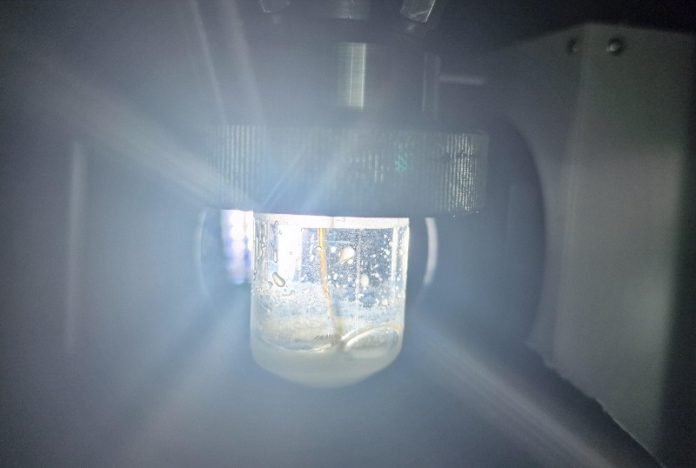
In an exciting leap forward for green technology, scientists have developed a new method to transform CO2, a gas that contributes to global warming, into methanol, a sustainable type of fuel, using just sunlight.
This breakthrough, achieved by an international research team from universities in Nottingham, Birmingham, Queensland, and Ulm, offers a promising route to eco-friendly fuel production.
The researchers created a special material that combines copper atoms with nanocrystalline carbon nitride.
When sunlight hits this material, it starts a chain reaction that converts CO2 into methanol.
This process is known as photocatalysis and it’s a bit like a super-powered form of photosynthesis, where light is used to trigger chemical reactions.
Normally, turning CO2 into useful products is a tough job requiring high temperatures and fossil fuels. But this team’s method uses solar energy, making it a cleaner, more sustainable option.
The key to their success lies in the way they arranged the copper atoms on the carbon nitride material.
This setup allows electrons (tiny particles within atoms that carry energy) to flow smoothly to the CO2, kickstarting the transformation into methanol.
Dr. Madasamy Thangamuthu and his colleagues focused on tweaking the carbon nitride material to make it work even better with light.
By heating it just right, they created a version that’s much more active in the sunlight than the usual kind.
Then, by adding a sprinkle of copper atoms—using a fancy technique that doesn’t need solvents—they greatly improved the efficiency of the process.
What’s really cool is that with just a tiny amount of copper added to their special carbon nitride, the researchers were able to not only boost the reaction efficiency but also steer the reaction towards producing methanol instead of methane (another greenhouse gas).
Methanol is valuable as a green fuel because it’s cleaner and can be used in various energy applications.
Professor Andrei Khlobystov pointed out that making fuel from CO2 could help achieve a balance in our planet’s carbon footprint, contributing to the global goal of reducing greenhouse gas emissions.
Plus, the materials they’re using—carbon, nitrogen, and copper—are abundant and sustainable, making this approach friendly to both the environment and the economy.
This discovery opens the door to developing new catalysts (substances that speed up chemical reactions) that are both highly selective (meaning they can target specific reactions) and adjustable, allowing scientists to “dial in” the desired outcome.
This means we’re getting closer to a future where we can turn CO2 from the air into useful, eco-friendly fuels just by harnessing the power of the sun.



